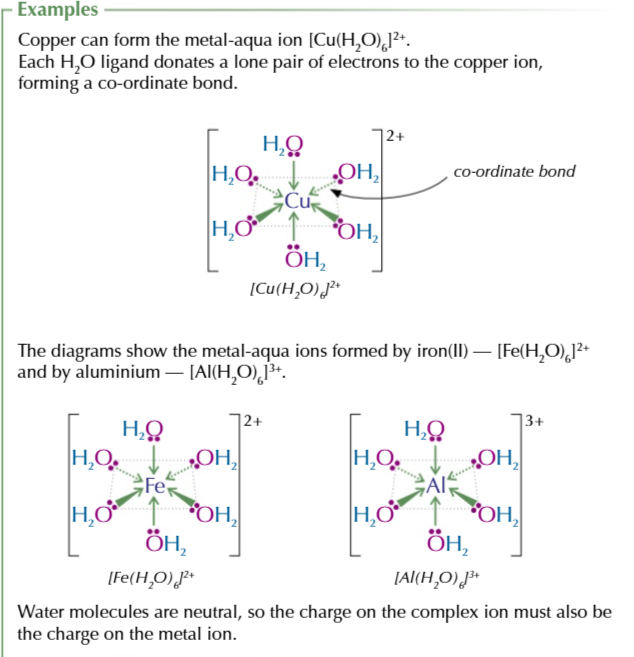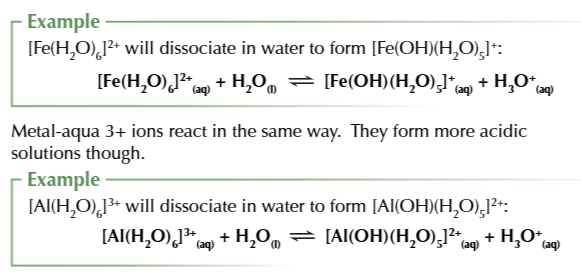1. METAL AQUA IONSSS
1/14
There's no tags or description
Looks like no tags are added yet.
Name | Mastery | Learn | Test | Matching | Spaced |
|---|
No study sessions yet.
15 Terms
Coordinate bonds
involve one substance donating an electron pair to another
when metal compounds dissolve in water
the water molecules form coordinate bonds with the metal ions
metal-aqua complex ions
generally 6 water molecules form coordinate bonds with each metal ion
water molecules donate lone pair electrons from their oxygen
to form coordinate bonds

in a solution containing metal-aqua 2+ ions
there is a hydrolysis/ acidity reaction between the metal aqua ion and the water
metal aqua 2+ ion releases H+ Ions
so an acidic solution is formed
the solution is only weakly acidic
there is only slight dissociation

metal 3+ ions are smaller but have a high charge
this gives them a high charge density (charge/size ratio)
metal 2+ ions have a lower charge density
this makes 3+ ions more polarising than 2+ ions
more polarasing power
means that they attract electrons from oxygen atoms of a coordinate bod more strongly,
more polarising power weakens O-H bonds
so its more likely H+ ions are released
the more hydrogen ions releases the more acidic the solution
3+ metal ions are more acidic than 2+ metal ions